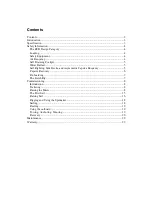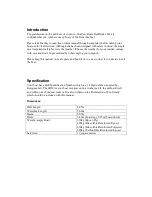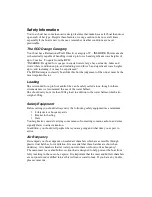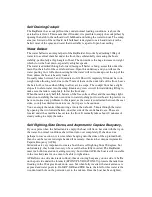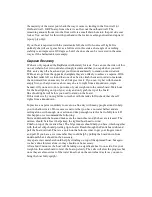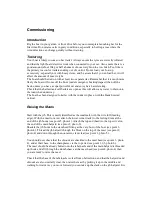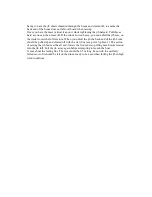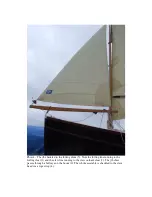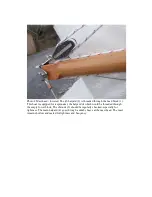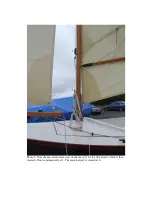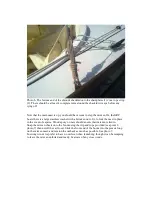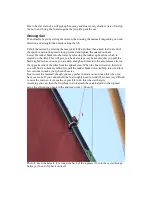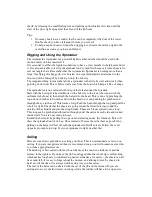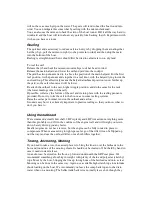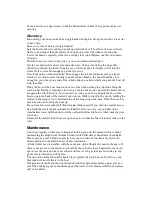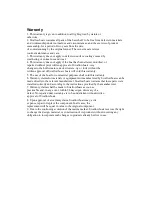
Commissioning
Introduction
Rig the boat in your garden or front drive before you contemplate launching her for the
first time. Do not raise sails in gusty conditions, especially in built up areas where the
wind direction can change quickly without warning.
Trailering
Your boat is likely to come on her trailer. Always ensure the tyres are correctly inflated,
and that the light board electrics work when connected to your car. Also ensure there is a
good amount (about 30kg or half a human) of nose weight on the tow hitch. Too little is
the primary reason for trailers snaking out of control. Do not load your boat up
excessively, especially not with heavy items, and be aware that if you do load her, it will
affect the amount of nose weight.
The boat should be tied on with at least two separate ties. Remember that it is much more
likely the boat will come off the front (under emergency braking/impact) than off the
back, unless you have a super powerful car and enjoy harsh accelerating.
Check that the ballast tank self bailers are open as this will allow any water to drain onto
the road when underway.
The boat has been designed to trailer with the rudder in place, with the blade hoisted
vertical.
Raising the Masts
Start with the jib. This is easily identified as the small sail, with the wire luff (leading
edge). With the mast lowered, attach the lower corner (tack) to the furling drum at the
end of the jib boom (see point 5, photo1). Attach the top end (head) to the top swivel on
the end of the main halyard (see point 2, photo 2).
Shackle the jib boom to the stem head fitting at the very bow of the boat (see point 3,
photo3). Thread the jib halyard through the block on the top of the mast (see point 2,
photo 4) and down through the non return clam cleat (see point 1, photo 5).
You should next check that the shrouds are shackled to the mast head (see point 3, photo
4), and at their base, to the chainplates, via the rope ties (see point 1,2,3, photo 6).
The mast should be already bolted onto the tabernacle and if the main halyard is threaded
up (hook end aft) through the dumb sheave at the mast head (see point 4, photo 4) then
you are ready to raise the mast.
Check that the base of the tabernacle is clear from obstructions, and that the halyards and
shrouds are also similarly clear, then raise the mast by picking it up in the middle and
walking forwards. As you move forward you can take up the slack on the jib halyard. It is


